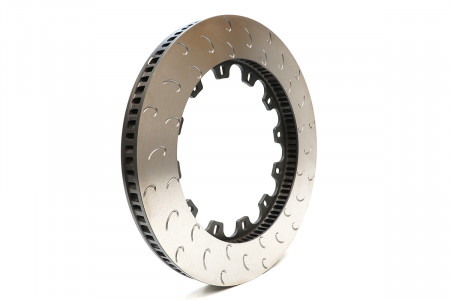- New Products
- AP Racing Big Brake Kits
- AP Racing Brake Discs
- AP Racing Brake Calipers
- AP Racing Master Cylinders
- Essex Brake Bundles (upgraded pads, lines, fluid, discs that work with OEM Calipers)
- Brake Pads
- Brake Fluids
- Spiegler Brake Lines
- Tools, Temperature Indication and Protection Products
- Wheels
- Suspension
- Apparel and Merchandise
- Formula SAE
- Clearance
AP Racing J Hook Competition Disc Replacement Ring (408x34mm)- Right Hand
Part #: 13.05.10082
Brand: AP Racing
16.06" x 1.34" (408mm x 34mm) 84 Wave Vane, D62, J Hook Right Hand Iron Racing Brake Disc
- Weighs 23.5 lbs.
- AP Racing P/N - CP7384-128GC
Iron Ring and Aluminum Hat Assembly Instructions
Torque specs for this disc and hardware assembly= 124 lb.-in
Show All vehicles this product fits
Application: Track

We are introducing a new internal vane technology in our front 2-piece discs for the 992 GT3. It is called the Sinusoidal Vane, which AP sometimes refers to internally as the 'Wave' Vane for obvious reasons as you’ll see below. This tech is something that has helped AP Racing brake systems win championships in international GT racing, as well as multiple NASCAR Cup championships here in North America. As one of the most desirable track weapons on the planet, we wanted the 992 GT3 to be the first production car application for this technology in North America. Just as AP Racing's Radi-CAL calipers set a new benchmark for caliper stability, cooling, and durability, the Sinusoidal Vanes have done the same for iron racing discs.
The concept for this disc design originated in NASCAR Cup. Up until the debut of the Next Gen car (for which AP/Essex are supplying the spec brake package), we were cramming our brake systems inside tiny 15” wheels. Trying to squeeze adequate brake thermal mass into a wheel that small is incredibly challenging, particularly when you have a 1,000 HP and 3,000 pounds mashing on them every few seconds from 200 mph…for hours on end! In a wheel that small, there isn’t anywhere for the heat to go, and the durability of every component is crucial. We were constantly looking for ways to provide the Cup teams with increased durability, stability, and cooling, and that’s what led AP to this technology.

AP's new Wave Vanes above vs. traditional curved vanes inside a typical J Hook disc below:

Benefits of the Wave Vane disc technology vs. traditional curved vanes:
- Increased thermal stability- Wild temperature swings are what causes discs to crack. When you stand on the brakes for an approaching corner, your disc temperatures skyrocket and the iron expands. As you travel down the subsequent straight, the discs are blasted with cooling air. The longer the straight and the higher the speed, the greater the temperature drop, and the further the iron contracts. This expansion and contraction cycle places a huge amount of stress on the iron and is what causes them to eventually crack. That’s why tracks with relatively slow corners at the end of high-speed straights, followed by another long straight, decimate brake discs (think Watkins Glen or Road America). In an ideal world, once you brought your discs up to race temps, you would keep them at a constant temperature for the entire session. The Sinusoidal Vane brings the discs closer to that goal by decreasing the difference between the maximum and minimum disc temperature by as much as 35%. That means a less dramatic temperature swing and greater crack resistance and durability.
- Reduced maximum disc temperatures by 10%+: Not only are temperature swings less intense with the Wave Vane, the maximum temperatures reached are substantially lower. For example, in one NASCAR test the Wave Vane discs showed a peak temp of 1328F and a minimum temp of 1085F (delta of 243F), while the traditional curved vanes maxed out at 1490F and a min of 1121F (delta of 369F). Not only was the difference between min and max more subdued, the max temperature reached by the Wave Vane disc was 162F lower!
- Increased cooling surface area- Each of the internal Wave Vanes has a larger cooling surface area vs. a traditional curved vane.
- Greater support for the disc face- A disc’s internal vane structure provides the support lattice behind the disc face. Having many internal vanes impacts airspeed and heat transfer through the disc, reduces air recirculation between vanes, and reduces deflection at the disc face. In practical terms, a disc with a high number of vanes is more thermally stable, maintains more even contact with the brake pads (which reduces uneven pad deposits/judder), and is less prone to distortion. In summary, the Wave Vane design provides even greater support for the disc face than AP’s standard curved vane designs.
- Reduced weight- The Wave Vane design provides a slight unsprung weight reduction vs. a similar disc with curved internal vanes.
Internal Vane Quantity and Quality
The internal vane design on AP J Hook discs is quite a bit different vs. OEM-style discs and other brands of aftermarket discs. Many OEM discs feature a pillar vane design, which can be thought of as a group of posts or pillars connecting the two disc halves together (see pic below). The pillars are not organized linearly from the outside to the inside of the disc, and turbulence is created as air flows through and among them. Pillar vane discs are therefore not particularly well suited to heat evacuation. The goals of a pillar vane design are disc face stability for low NVH (Noise, Vibration, Harshness), and a low cost of production. Pillar vanes are non-directional, and the same part number is used on both sides of the car (again for cost reduction). Other OEM discs feature a straight, non-directional internal vane. While that type of vane flows more air than a pillar, it does not move nearly as much air as the directional vanes featured in AP Racing's discs. Having directional vanes means that AP Racing discs are handed. There is a unique left disc and a right disc in each pair, and they cannot be swapped from side-to-side on the car. The orientation of the vanes is optimized to spin in a certain direction, pumping the maximum amount of air possible through the disc. The shape of these internal vanes is also optimized to promote smooth airflow.
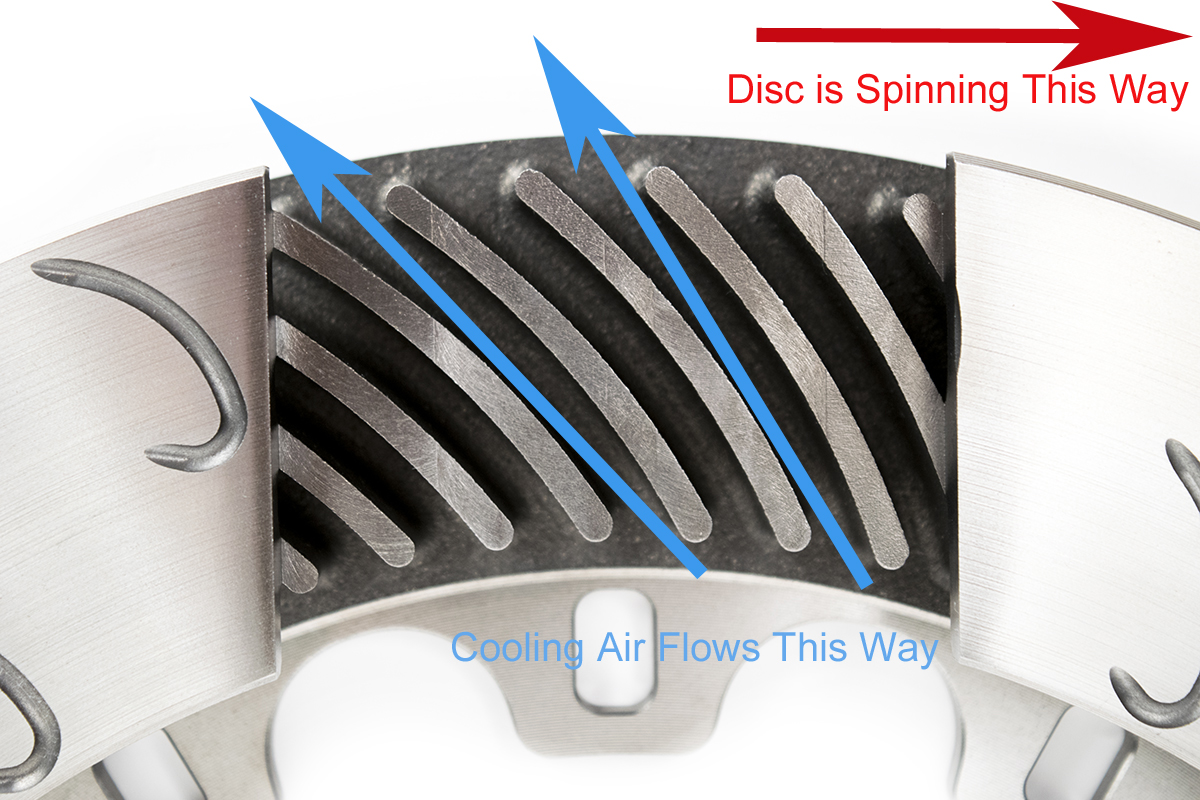
In addition to having a superior internal vane design, AP Racing
discs have far more of
them! Most aftermarket discs have 30 to 48 vanes. After extensive
CFD and thermal stress analysis, AP designed the J Hook's with a high
vane count (typically 60 to 84 depending on application). Having more
vanes increases airspeed and heat transfer through the disc, reduces air
recirculation between vanes, and reduces
deflection at the disc face. Compared to an OEM-style disc or
competitor's 48 vane discs, the 60+ vane discs are less prone to coning,
distortion, and cracking, while
providing less brake fade, reduced judder, more even pad contact, and a
longer service life.
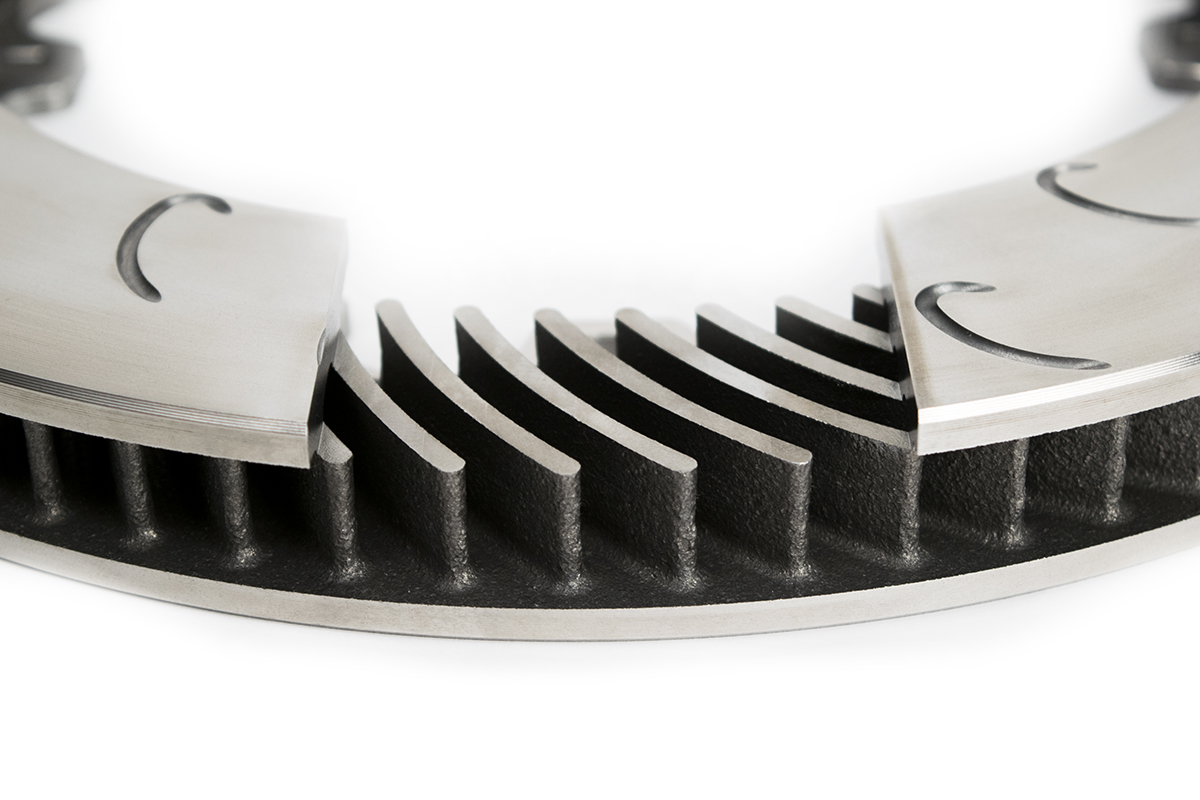
Exclusive AP Racing J Hook Slot Pattern
When you cut a slot or drill a hole in a disc you impact heat transfer. The area around the slot or hole acts as a cool spot when the disc heats up, which is not ideal. Ideally, heat is distributed uniformly around the disc so it can be hit with the cooling air that is pumping through the disc, radiate outwards away from the disc, etc. Cool spots create stress risers and increase the likelihood of the disc cracking. They also cause the face of the disc to distort unevenly, leading to uneven pad deposits, vibration, and judder.
The OEM discs avoid this
problem by simply leaving the face blank. While the risk for NVH goes
down, so does the pad bite and feel of the disc through the brake
pedal. Competitive aftermarket offerings typically have straight slots,
which tend to leave cool spots across the disc face between the slots.
During
exhaustive R&D testing, AP's J Hook design was found to create a
constant pathway of evenly distorted material on the face of the disc.
The hooks are spaced out as evenly as possible both around the
circumference of the disc, as well as from the inside edge (where the
hat attaches) to outer edge, with a slight overlap to promote even heat
distribution/distortion. In addition to reducing cracking, the even
heating of the disc also helps provide an even transfer layer of pad
material on the disc when you bed them in.
Additionally, the J
Hook slot pattern produces a greater number of leading edges for the
pads to bite into vs. a traditional curved slot pattern, and
particularly a plain-faced disc. While this may lead to slightly more
whirring or scraping noises from the discs when applying the brakes, the
benefits of more even heat distribution, less propensity to crack,
cleaner pad material transfer during bed-in, and more bite far outweigh
the slight increase in NVH for the serious enthusiast.

Complex Metallurgy Developed Through 50+ Years of Experience
AP Racing has been designing brake components for more than 50 years. They've had their components on cars that have won more than 750 Formula 1 races! On any given race weekend, AP J Hook discs can be found on 75% or more of the NASCAR Sprint Cup grid. AP has learned from these experiences, and have developed a proprietary iron alloy with extreme durability, designed specifically for what you intend to do with it (flog the hell out of it). The primary objectives with OEM discs are simple: they must be cheap and easy to produce. The design objectives for these two products are vastly different.
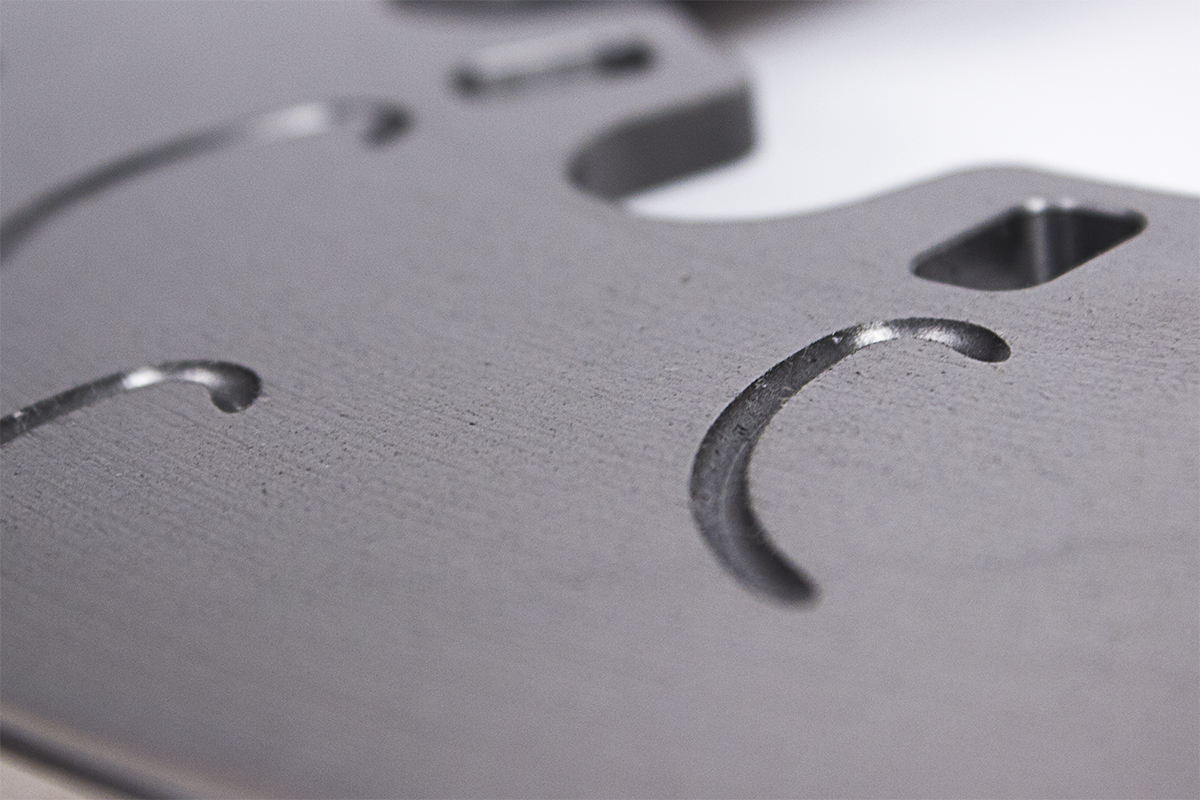
Disc Burnishing/Bedding Service
If your brake discs aren’t being properly prepared for abuse prior to flogging them on track, you’re exposing yourself to potential judder, vibration, and cracking issues. We all know that prepping your pads and discs at the track can be difficult. Doing so wastes time during the first session of the day, and it's a hassle and potentially dangerous for other drivers as you go through the procedure. Track time is expensive and tough to come by. The more time you spend behind the wheel performing an elaborate bed-in procedure, the less time you’ll spend doing hot laps. Performing the procedure on-track also limits its repeatability. You can't control what's going on around you with track conditions, other drivers, etc., and many track configurations don't really lend themselves to the constant start/stop/start required to do the job properly.
Essex is now offering a solution via our professional burnishing service. Previously reserved for our professional racing customers, we are now offering our retail customers the option of having the discs in select Competition Brake Kits pre-burnished at our factory. We burnish thousands of discs for the top racing teams each year. After countless hours of experimentation, and extensive feedback from the top drivers and teams, we can consistently squeeze the most reliable performance out of AP Racing's discs. The procedure is incredibly repeatable, as it is performed on a computer-controlled machine by experienced technicians. The cost of our burnishing service is $50 per disc ($100 per brake kit).
Please note that the pads you receive will not be pre-burnished. In other words, the pads and discs do not have to be a matched set burnished together to reap the benefits the procedure has on the discs. In other words, we will burnish the discs in the pad compound you choose, they just won't be burnished with the exact set of pads that will arrive with your kit.
Watch a brief video of our disc burnishing service here.
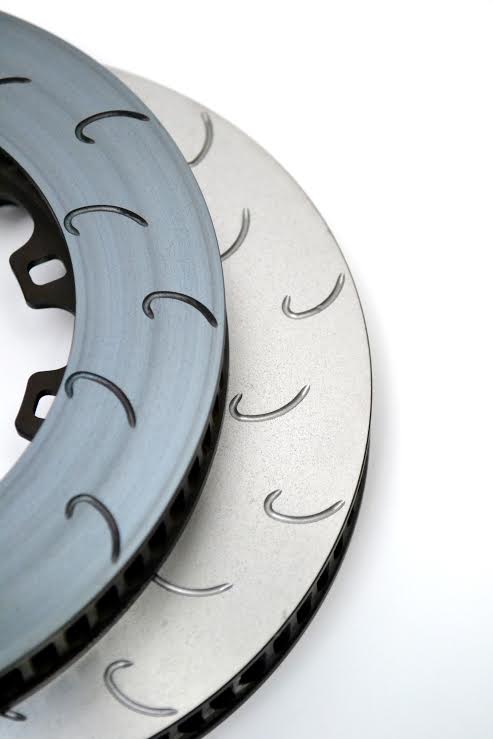
Reasonable Replacement Cost
Let's face it, no matter how good a brake disc is, it's still a consumable item. They're no different than brake pads or gasoline. You beat them up until they crack to pieces, then you throw them away. If replacement iron is too expensive, you're always driving in fear, waiting to shell out big bucks for a new set. Despite having the most expansive set of features on the market, spare AP Racing J Hook's are completely affordable.
Going to the track is expensive! Event entrance fees, hotels, fuel, and tires all add up. While you obviously want the best product available, you can't afford to pay a small fortune for something you're just going to destroy. You can buy a cheap set of discs for every event, have relentless heat issues, and find yourself constantly swapping them out. When you do the math, the long-term value of the AP J Hook's is tough to beat. You'll enjoy all the benefits without breaking the bank, and you'll spend more time driving and less time wrenching.
Elite level teams choose AP Racing discs because they know the work has been done to provide the best available product at any price level. The AP J Hook is a direct derivative of AP's vast racing experience. You can buy with confidence knowing that you're getting the best product available at any price point. A note of caution however: the J Hook design is often imitated, and there are a number of lesser quality imitations on market. Before purchasing, make sure you are getting an authentic AP Racing J Hook.
If your brake discs aren’t being properly prepared for abuse prior to flogging them on track, you’re exposing yourself to potential judder, vibration, and cracking issues. We all know that prepping your pads and discs at the track can be difficult. Doing so wastes time during the first session of the day, and it's a hassle and potentially dangerous for other drivers as you go through the procedure. Track time is expensive and tough to come by. The more time you spend behind the wheel performing an elaborate bed-in procedure, the less time you’ll spend doing hot laps. Performing the procedure on-track also limits its repeatability. You can't control what's going on around you with track conditions, other drivers, etc., and many track configurations don't really lend themselves to the constant start/stop/start required to do the job properly.
Essex is now offering a solution via our professional burnishing service. Previously reserved for our professional racing customers, we are now offering our retail customers the option of having the discs in select Competition Brake Kits pre-burnished at our factory. We burnish thousands of discs for the top racing teams each year. After countless hours of experimentation, and extensive feedback from the top drivers and teams, we can consistently squeeze the most reliable performance out of AP Racing's discs. The procedure is incredibly repeatable, as it is performed on a computer-controlled machine by experienced technicians. The cost of our burnishing service is $50 per disc ($100 per brake kit).
Please note that the pads you receive will not be pre-burnished. In other words, the pads and discs do not have to be a matched set burnished together to reap the benefits the procedure has on the discs. In other words, we will burnish the discs in the pad compound you choose, they just won't be burnished with the exact set of pads that will arrive with your kit.
If you'd rather have a go at preparing your discs yourself, please watch the video below:
Disc Attachment Hardware
12-bolt disc attachment hardware kit (enough for one disc)
Iron Ring and Aluminum Hat Assembly Instructions









